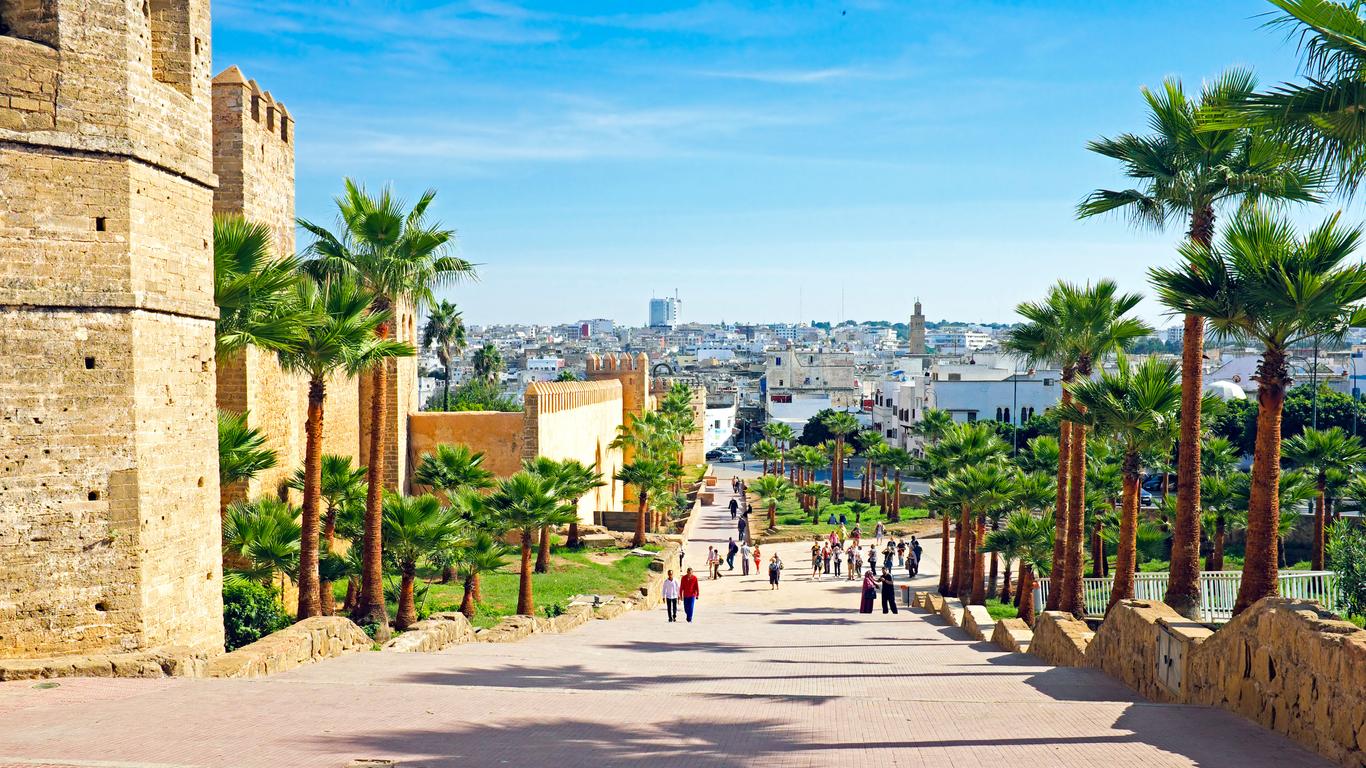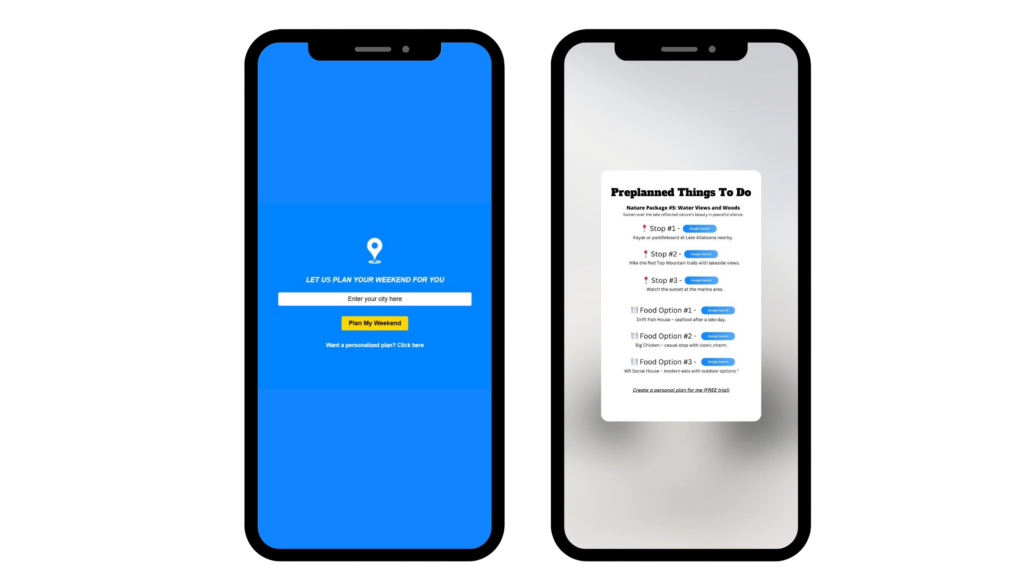
Key Takeaways:
-
Rabat blends royal heritage, coastal relaxation, and local charm into a dynamic city worth exploring every month of the year.
-
From centuries-old medinas to modern art spaces and seaside gardens, Rabat offers a calm, underrated travel experience in Morocco.
-
Whether you’re into history, ocean views, or cultural events, Rabat rewards slow travelers and curious wanderers alike.
Rabat, Morocco’s capital, may not always steal the spotlight like Marrakech or Casablanca, but it quietly impresses with its blend of elegance, history, and coastal beauty. Sitting along the Atlantic Ocean and the Bou Regreg River, Rabat is a city of grand palaces, blue-washed kasbahs, Andalusian gardens, and well-preserved ruins. It has served as Morocco’s political center since the 12th century and continues to evolve with art galleries, festivals, and a modern tram system that makes it easy to explore. Travelers love Rabat for its laid-back vibe, cultural richness, and the unique way it balances traditional Moroccan identity with a progressive, coastal rhythm. Whether you’re strolling through medinas or attending international festivals, Rabat always has something meaningful to offer.
Table of Contents
-
Explore the Kasbah of the Udayas
-
Visit the Hassan Tower and Mausoleum of Mohammed V
-
Walk Through the Andalusian Gardens
-
Attend the Mawazine Music Festival
-
Discover Modern Art at Mohammed VI Museum
-
Wander the Medina and Rue des Consuls
-
Relax on Rabat’s Urban Beaches
-
Tour the Chellah Necropolis
-
Enjoy Sunset at the Bou Regreg Marina
-
Take a Day Trip to Salé’s Historic Medersa
1. Explore the Kasbah of the Udayas
The Kasbah of the Udayas is one of Rabat’s most iconic landmarks—a fortified clifftop district painted in calming shades of white and blue. Originally built in the 12th century, this quiet, maze-like neighborhood is filled with narrow alleyways, arched gateways, and panoramic views over the Atlantic Ocean. At its entrance, the monumental Bab Oudaia gate sets the tone with its intricate carvings and grand scale. Inside, you’ll find peaceful courtyards, hidden cafes, and flower-filled paths that make it feel like a living postcard.
The kasbah is open to wander year-round, and every season offers its own charm—from spring blooms to golden winter sunsets over the sea. Don’t miss the viewing terrace at the edge, where locals come to sit and reflect. Whether you’re a photographer, a history lover, or simply in need of a peaceful stroll, the Kasbah of the Udayas offers a timeless escape.
2. Visit the Hassan Tower and Mausoleum of Mohammed V
The Hassan Tower, Rabat’s most famous historical site, is the incomplete minaret of a grand mosque that was never finished—but it still stands as a powerful symbol of Morocco’s past. Built in the 12th century by Sultan Yacoub al-Mansour, the tower was intended to be the tallest in the world. Now, the red stone structure and its surrounding marble columns form a hauntingly beautiful open-air site. Just opposite the tower lies the Mausoleum of Mohammed V, which houses the tombs of the beloved former king and his sons, including King Hassan II.
Visitors can explore the grounds for free all year, admiring the Andalusian-style architecture, hand-carved cedar ceilings, and quiet ceremonial atmosphere. Guards dressed in traditional uniforms add to the regal ambiance. It’s a place where reverence, artistry, and national pride intersect. Whether you visit in the heat of summer or the coolness of winter, this site offers a powerful sense of history.
3. Walk Through the Andalusian Gardens
Tucked behind the Kasbah of the Udayas lies the Andalusian Gardens, a peaceful retreat filled with orange trees, blooming bougainvillea, and traditional Moroccan tilework. These gardens were designed during the French protectorate in the 20th century, blending Moorish and European styles to create a relaxing, fragrant space ideal for afternoon wandering. Birds chirp from the trees, cats lounge on shaded steps, and paths wind through flowerbeds and fountains.
The gardens are free and open year-round, offering a refreshing escape from the busy medina streets nearby. It’s especially enjoyable in spring and fall when temperatures are mild and blossoms are at their peak. Visitors often combine this stop with the adjacent Oudayas Museum, located in a former palace within the garden walls. Whether you’re looking to journal, meditate, or simply take in the beauty, this is one of Rabat’s most romantic hidden gems.
4. Attend the Mawazine Music Festival
Held every summer, the Mawazine Festival is one of Africa’s largest music festivals, drawing international artists and over 2 million attendees to stages across Rabat. Over the years, it has hosted acts like Rihanna, Stromae, Shakira, and major Arab musicians, while also spotlighting Moroccan talent. The event is held over nine days and features free concerts in open-air venues and ticketed shows in larger arenas.
The city comes alive during this time with pop-up food stalls, cultural parades, and late-night energy that pulses through every street. Whether you’re catching a performance at the OLM Souissi stage or dancing with locals in the medina, Mawazine is an unforgettable way to experience modern Morocco. For music lovers, timing your trip around this festival guarantees an electrifying cultural highlight.
5. Discover Modern Art at Mohammed VI Museum
Opened in 2014, the Mohammed VI Museum of Modern and Contemporary Art is the first large-scale museum in Morocco dedicated entirely to modern works. Located in a sleek building near central Rabat, the museum showcases paintings, sculpture, photography, and installations by Moroccan and international artists. Its exhibitions rotate seasonally, making it a compelling year-round stop for culture seekers.
Inside, you’ll find works that reflect Morocco’s social issues, spiritual traditions, and emerging artistic voices. It’s a stark contrast to the city’s older monuments, and that contrast is exactly what makes Rabat so dynamic. With air conditioning, multilingual signs, and a central location, this museum also makes for a comfortable break during hotter months or rainy days.
6. Wander the Medina and Rue des Consuls
Rabat’s medina is calmer and more accessible than those in Fez or Marrakech, making it an excellent place to explore for first-time visitors to Morocco. You’ll find colorful shops selling handmade rugs, leather slippers, spices, and silver jewelry along narrow alleys that twist toward Rue des Consuls—one of the oldest and most elegant streets in the city. The name dates back to the 17th century when European diplomats and traders lived and worked here.
Today, it’s a popular place to shop for artisanal goods, watch craftsmen at work, and find one-of-a-kind souvenirs. The medina is open year-round, with different moods depending on the season—brighter colors in summer, thicker fabrics in winter. Whether you want to bargain for a handwoven carpet or simply soak up the local energy, this area is a must for anyone wanting an authentic shopping experience.
7. Relax on Rabat’s Urban Beaches
Rabat’s coastline offers some surprisingly good beach spots just steps from the city center. Popular locations include Plage de Rabat and Oudayas Beach, where locals surf, picnic, and relax with family and friends. The beaches are backed by crumbling stone walls and historic kasbah views, making for a rare blend of sand, waves, and architecture.
You can enjoy these spots year-round, though the best swimming weather is between May and October. Surf schools operate most months, and there are beachfront cafes offering mint tea and grilled sardines. It’s an easy way to take a break from sightseeing and connect with the city’s laid-back coastal rhythm.
8. Tour the Chellah Necropolis
The Chellah is one of Rabat’s most fascinating archaeological sites—a walled necropolis and ruined city that dates back to Roman times and was later used by the Merinid dynasty. Inside, you’ll find crumbling columns, overgrown gardens, stork nests, and the haunting remnants of mosques, tombs, and Roman infrastructure. It’s one of the few places where Roman and Islamic ruins coexist within the same ancient walls.
The site is peaceful and scenic, especially during spring when wildflowers bloom between the stones. Chellah is open year-round and tends to be less crowded than other landmarks, making it ideal for travelers who enjoy photography, history, or quiet contemplation. It’s a beautiful and unexpected window into Morocco’s layered past.
9. Enjoy Sunset at the Bou Regreg Marina
The Bou Regreg Marina, stretching between Rabat and its twin city Salé, is one of the area’s most modern developments. Lined with restaurants, cafes, and walking paths, it offers stunning views of both the river and city skylines. At sunset, the golden light hits the water and paints the entire promenade in warm hues, making it a favorite spot for locals and visitors alike.
You can sip coffee with a view, rent a kayak or paddleboat, or simply take a stroll while enjoying the cool evening breeze. The marina is active year-round and particularly lively in the evenings when families, couples, and joggers gather to unwind. It’s one of the best places in Rabat to relax with a mix of urban energy and waterside serenity.
10. Take a Day Trip to Salé’s Historic Medersa
Just across the Bou Regreg River lies the city of Salé, often overlooked but rich in its own right. One of its standout attractions is the Medersa of Salé, a 14th-century Islamic school known for its intricate zellige tilework, carved cedar ceilings, and quiet spiritual ambiance. Though less famous than Rabat’s landmarks, this hidden gem offers a more intimate look at Morocco’s architectural and religious history.
The medersa is open most days and is easy to reach by tram or taxi. Combining your visit with a walk through Salé’s old town makes for a rewarding half-day trip. If you’re curious about Moroccan heritage beyond the tourist spots, this journey offers deep cultural payoff with fewer crowds.
What to do if you have kids?
Rabat is a great city for family travel, with plenty of low-stress, educational, and scenic activities. Kids can run free in the Andalusian Gardens or explore the fortified kasbah walls, while the Museum of Natural Sciences offers dinosaur skeletons and interactive exhibits. The Rabat Zoo is another favorite, housing animals native to Africa in spacious, naturalistic environments. Local cafes often welcome children, and the city’s walkable layout makes exploring easy with strollers. Whether visiting a beach, park, or palace, Rabat keeps things engaging and manageable for travelers with little ones.
Where can I find free events in Rabat Morocco taking place this weekend?
To discover free music shows, community markets, film screenings, and cultural events happening this weekend in Rabat, head to https://planmyweekend.ai. This smart tool is designed to help you instantly uncover fun, alcohol-free events around the city with zero planning stress. Whether you’re a solo traveler, a couple, or a family, you’ll find something local, engaging, and cost-free to experience in Rabat—just by checking the listings in real time.
Final thoughts on planning a trip here
Rabat is a city that reveals itself slowly, with layers of culture, history, and tranquility that reward both short visits and longer stays. It blends seaside beauty with royal heritage, offering an experience that feels both cosmopolitan and deeply rooted in Moroccan tradition. Year-round weather, fewer crowds, and a welcoming local spirit make it ideal for thoughtful, immersive travel. If you’re looking to experience Morocco at its most elegant and authentic pace, Rabat is the place to begin.
Author: Dejon Brooks
Dejon Brooks is an entrepreneur who founded Trend Watchers with his life savings. Aged 24, Dejon has turned Trend Watchers into a successful business. After reaching over 150M+ people on his personal accounts, he now spends his time growing Planmyweekend.ai


